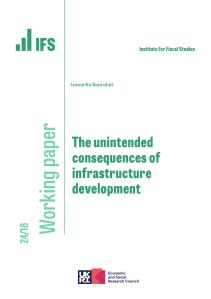<p>This paper contributes to the understanding of the source of identification in panel data models. Recent research has established that few time periods suffice to identify interesting structural effects in nonseparable panel data models even in the presence of complex correlated unobservables, provided these unobservables are time invariant. A communality of all of these approaches is that they point identify effects only for subpopulations. In this paper we focus on average partial derivatives and continuous explanatory variables. We elaborate on the parallel between time in panels and instrumental variables in cross sections and establish that point identification is generically only possible in specific subpopulations, for finite T . Moreover, for general subpopulations, we provide sharp bounds. Finally, we show that these bounds converge to point identification as T tends to infinity only. We systematize this behavior by comparing it to increasing the number of support points of an instrument. Finally, we apply all of these concepts to the semiparametric panel binary choice model and establish that these issues determine the rates of convergence of estimators for the slope coefficient.</p>









